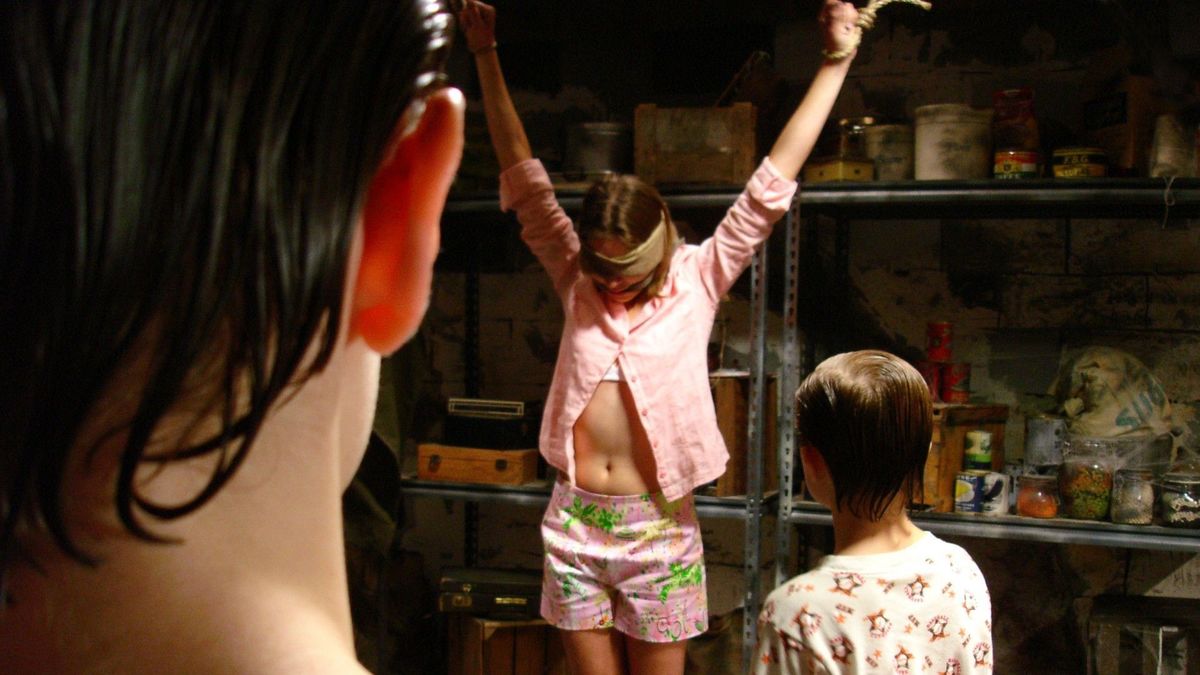The Girl Next Door (2007) – A Harrowing Descent into Suburban Horror
The Girl Next Door (2007), directed by Gregory M. Wilson and based on Jack Ketchum’s novel of the same name, is a deeply unsettling psychological horror film that delves into the darkest corners of human cruelty. Loosely inspired by the real-life 1965 torture and murder of Sylvia Likens, the film offers a fictionalized yet hauntingly realistic portrayal of abuse, complicity, and the loss of innocence.
Set in 1958 suburbia, the story is told from the perspective of David Moran, a middle-aged man recalling a traumatic summer from his youth. As a teenager, David befriends Meg and Susan Loughlin, two orphaned sisters sent to live with their aunt, Ruth Chandler, following the death of their parents. At first, Ruth appears to be a typical, albeit strict, guardian. But it quickly becomes evident that she is emotionally unstable and harbors a deep resentment toward Meg.

What begins as psychological torment soon spirals into physical abuse. Ruth manipulates her three sons and other neighborhood boys into participating in the systematic torture of Meg, whom she isolates in the basement. The punishments escalate from beatings and starvation to branding, sexual assault, and acts of extreme degradation. The most chilling aspect of the story is Ruth’s ability to normalize this brutality, turning Meg’s suffering into a grotesque game.
David becomes the film’s emotional anchor. Torn between fear and conscience, he watches helplessly as Meg’s condition deteriorates. His inner conflict represents the central moral question of the film: How far should one go to stop evil, and what is the cost of inaction? David’s failed attempts to get help add to the film’s tragic weight, culminating in a desperate final act where he tries to rescue Meg and confronts Ruth directly.

Blanche Baker delivers a terrifying performance as Ruth, portraying a character who is both monstrous and disturbingly mundane. Blythe Auffarth, as Meg, brings depth and quiet resilience to a role that is emotionally and physically demanding. Daniel Manche, as young David, portrays the slow unraveling of innocence with painful sincerity.
Critically, The Girl Next Door received a mixed response. Some praised its fearless handling of sensitive subject matter and its refusal to sensationalize the violence. Others criticized it for being too graphic and emotionally manipulative. Regardless, it remains one of the most disturbing entries in modern horror—not because of supernatural elements, but because its horror is rooted in real-world cruelty.

The film has gained a cult following among horror and true crime fans. Many viewers describe it as one of the most emotionally devastating films they’ve ever seen. Its portrayal of unchecked abuse and group complicity resonates deeply, provoking anger, sadness, and introspection. It’s not a film easily forgotten.
In conclusion, The Girl Next Door is a stark, emotionally brutal film that explores the darkest sides of human behavior. It challenges viewers to confront the nature of evil and the responsibility of those who witness it. Unflinching, painful, and powerful, it stands as a disturbing yet important reminder of what can happen when cruelty goes unchecked.



